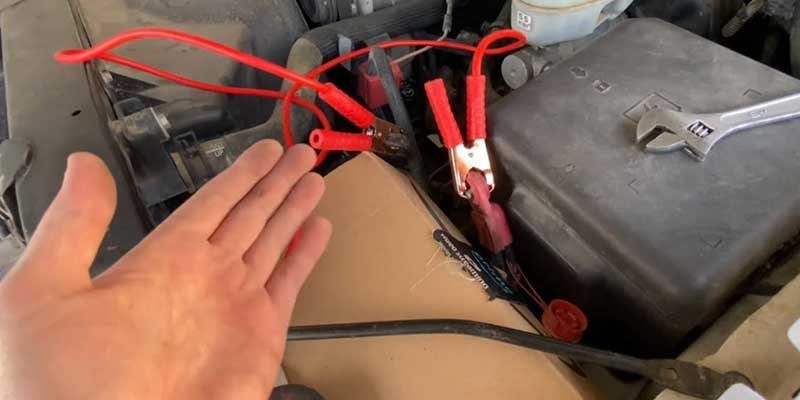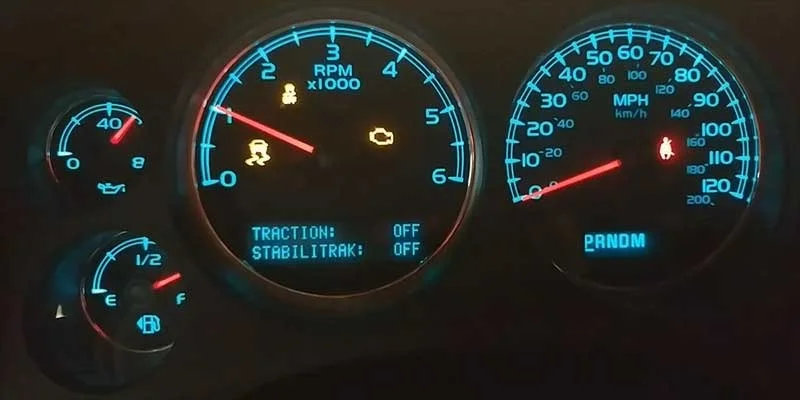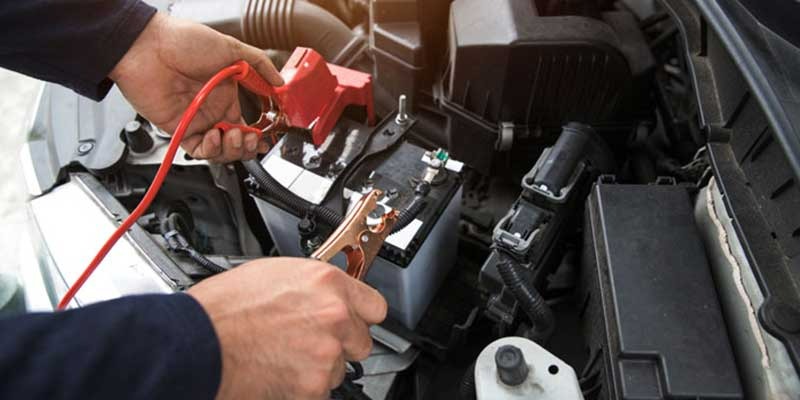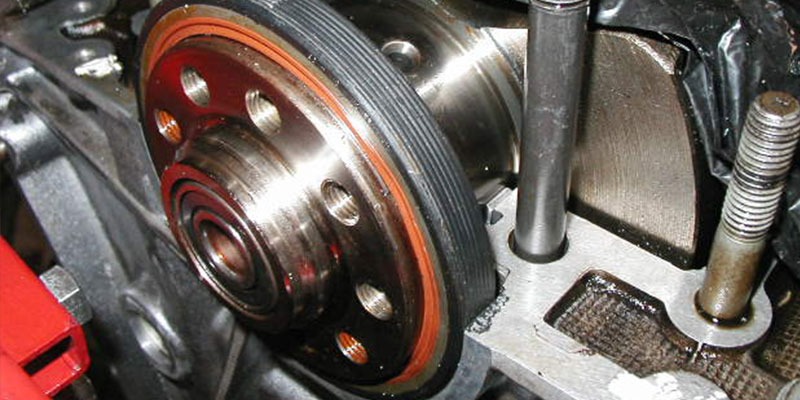Are you a proud owner of Toyota and experiencing some idling issues? Then knowing how to reset the throttle position sensor in Toyota vehicles is must. If you ignore the problem and continue driving with a faulty throttle position sensor, it can cause serious damage. The throttle position sensor is a crucial part of the fuel management system. Not just will you lose the fuel economy, but it may also cause serious damage to your engine.
This blog post will uncover how to reset the throttle position sensor in a Toyota model. Also, we will learn how a throttle position sensor plays a vital role in controlling your vehicle’s accelerator.
What are the Symptoms of a Falling Throttle Position Sensor?
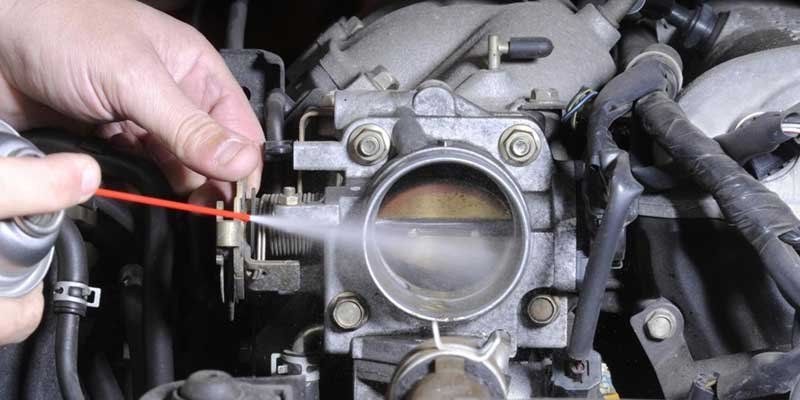
Here are some of the significant falling throttle position sensor symptoms:
- Tremendous drop in fuel economy
- Problem while accelerating
- Problem during changing gear lever
- Sudden idle surges
- Sudden speed surges while driving on the highway
- flashing of check engine light for no apparent reasons
While the optimal fuel economy is possible with a fully functional engine, the failed throttle position sensor leads to fuel overflowing. It results in an increase in fuel consumption and an overall reduction in vehicle performance.
The fluctuating rev gauge, along with an audible change in engine operation, is one of the strong failing signs of the throttle. The TPS cannot convert the pedal input to valve control as the smooth acceleration is replaced with dips and surges.
Why and When to Reset the TPS
Here are the two instances that require resetting the TPS:
Improving Engine Performance
Resetting the TPS can improve engine performance by ensuring that the sensor accurately communicates the throttle position to the ECU. A properly calibrated TPS allows the ECU to make precise adjustments to the air-fuel mixture and ignition timing, promoting the smooth acceleration and optimal power output.
For example, a study by the SAE found that resetting the TPS in vehicles with noticeable performance issues led to a 15 percent improvement in acceleration and throttle response. In addition, resetting the TPS can help restore lost power in older vehicles, which may experience sensor wear or buildup over time.
Solving Idling Problems
If your Toyota experiences rough idling, stalling, or other idling issues, resetting the TPS can help address these problems. As previously mentioned, a correctly calibrated TPS ensures that the ECU maintains the proper air-fuel mixture for smooth idling.
In a study published in the International Journal of Automotive Engineering, researchers found that resetting the TPS in vehicles with idling issues resulted in a 20 percent reduction in idle speed fluctuations and a 30 percent decrease in stalling incidents.
In conclusion, the throttle position sensor plays a vital role in your Toyota’s engine performance, fuel efficiency, and emissions control. Regularly checking and resetting the TPS can help maintain optimal engine performance and address issues such as erratic acceleration and idling problems. Be proactive in monitoring your vehicle’s TPS to ensure a smooth and efficient driving experience.
Tools and Materials Needed for TPS Reset
Resetting the throttle position sensor (TPS) in your Toyota is a straightforward task that can be accomplished with a few essential tools and materials. In this section, we will discuss the necessary equipment and their uses in the process of resetting the TPS.
Basic Hand Tools
To access and adjust the TPS, you will need a few basic hand tools:
Flathead screwdriver: This tool is useful for prying off any clips or connectors that may be securing the TPS electrical connector. Additionally, a flathead screwdriver can be used to carefully adjust the TPS when resetting it.
Phillips head screwdriver: The Phillips head screwdriver is needed to remove any screws holding the TPS in place. It is essential to have the correct size screwdriver to avoid stripping the screw heads.
Socket wrench set: A socket wrench set is necessary for removing any bolts or nuts that may be securing other components around the TPS. This will allow you to access the sensor easily and make adjustments as needed.
Multimeter or Voltmeter
A multimeter or voltmeter is an essential tool for testing the TPS and monitoring the voltage readings during the reset process. This instrument will help you determine if the TPS is functioning correctly and if it needs to be adjusted or replaced.
Safety Equipment
Working on your vehicle’s engine can pose certain risks, so it is crucial to use the proper safety equipment to protect yourself:
- Protective gloves: Wearing protective gloves will help shield your hands from cuts, scrapes, and burns while working on the engine. They also provide a better grip when handling tools and components.
- Safety goggles: Safety goggles are necessary to protect your eyes from debris, dust, or chemicals that may be encountered during the TPS reset process. It is essential to wear eye protection to prevent any potential eye injuries.
By gathering the appropriate tools and materials, you can ensure a smooth and efficient TPS reset process. Remember to follow safety guidelines and consult your vehicle’s owner’s manual or repair manual for specific information regarding the location and adjustment of the TPS in your Toyota model.
How to Reset Throttle Position Sensor in Toyota?
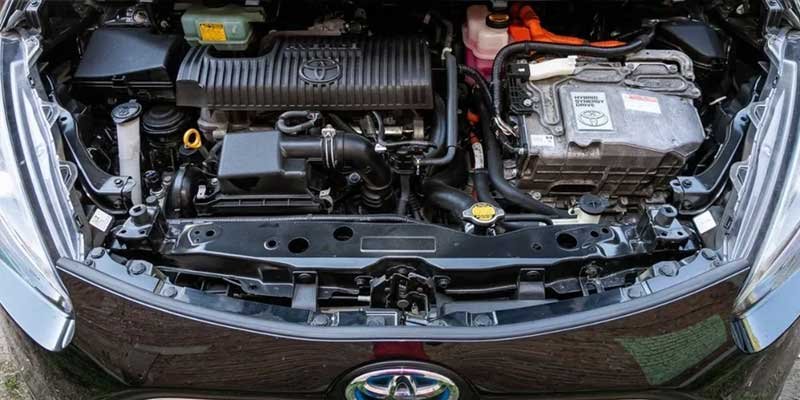
The quick and easiest way to fix the throttle position sensor is to reset it.
This method is simple, and you don’t need to be an expert:
- Please take off your foot from the accelerator to release it properly
- Now turn the ignition key on and wait for 2 seconds
- Now turn the ignition off and wait for another 10 seconds
- Repeat step no. 3 and step no. 4.
Now the reset process is complete.
Is There Another Way to Reset the Throttle Position Sensor?
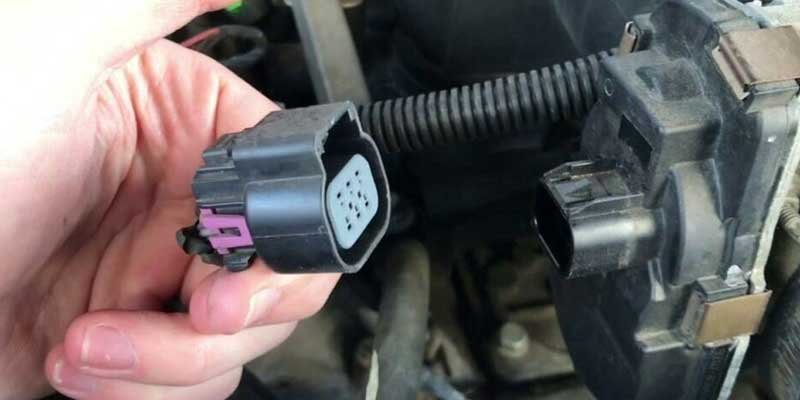
One of the easiest ways to reset the throttle position sensor is to remove the engine control module’s fuse or unhook the negative cable for 5 minutes from the battery.
While resetting the fuse is a rare occurrence, it sometimes helps fix the TPS failure. The location of the fuse box depends on the type of vehicle you own. Please check the user manual to locate the fuse box.
For disconnecting the negative cables from the car battery, lift the hood and use an appropriate wrench to complete the task.
While repairing or replacing your sensor, the use of a throttle body reset diagnostic tool is recommenced.
How to reset Engine Control Unit using the Scan tool?
The engine control unit (ECU) is the computer that controls a car’s engine. ECUs can monitor many variables, including temperature and pressure, and adjust operations quickly to maintain optimal performance.
The scanner monitors the ECU and displays the engine and transmission information to the monitor. This information, along with stored diagnostic codes, allows technicians to diagnose faults in the vehicle’s operating system quickly.
A fault in an ECU will generate a diagnostic code, which you can then read with a scan tool. The scan tool will show you the fault and what component or system it is related to.
A mechanic can use this information to locate the defective part. It may be necessary for a mechanic to reset the ECU if a code does not arise from a known issue so that new codes are generated and traced.
Resetting an ECU is usually done by turning off your car and taking out the key or batteries for several minutes. It all depends on how many times it has been reset. Sometimes, it may be necessary to replace parts to clear diagnostic codes.
Be sure to take down any fault codes stored with the scan tool before you remove it from your car. This information can be used to diagnose and repair problems. You can keep many advanced scanner tools in your vehicle for future reference.
Use a scanner tool to reset the ECM with effective computer communication. The “code” function will be available, and you can clear any DTCs.
Although this is an easy process, make sure to work with a certified technician who has been trained in diagnosing trouble codes. When working with fuel, be sure to follow safety precautions.
After you are done with the repairs, the “Check Engine” light will need to be reset on your dashboard. Most cars that have an electronic engine control system can be scanned with a scanner to see any errors and determine fuel efficiency.
The scanner connects car’s dashboard port to transfers error codes reflecting on your computer screen.
After removing all errors, return to the scanner and click “Reset ECU.” It will turn on the engine light in your dash. If you have another error code in your vehicle, you can continue this process.
You can reset your car’s battery by either unplugging it from the car for 10 minutes or plugging it back into it. Or you can use a scanner tool to do this. It is important to reset your codes before you drive them again.
How do You Calibrate the Throttle Position Sensor in Toyota?
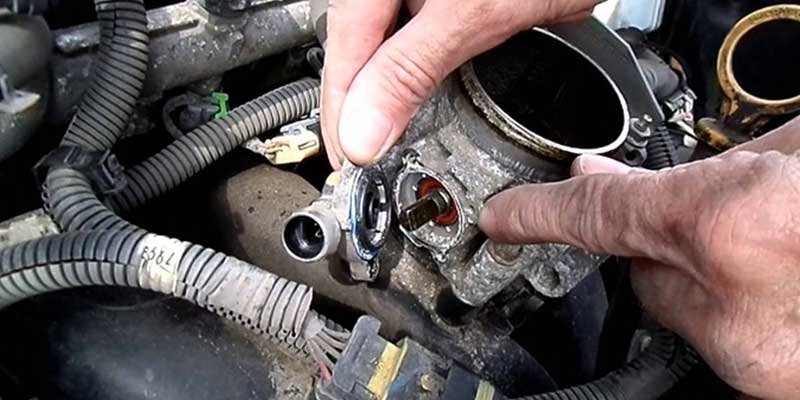
Calibrating a Toyota throttle position sensor requires some prerequisites as follows:
- Keep the car in the park position
- Please turn on the ignition so that the vehicle can reach its operating temperature
- The AC and headlights should be off
Once you are done with the prerequisites above, here are the steps to calibrate the throttle position sensor:
- Check if the accelerator pads completely released
- Keep the engine off but the ignition key on for 3 seconds
- Press and release the accelerator pedal 5 times in the next 5 seconds
- Now take a rest for 10 seconds.
- Now press the accelerator pedal completely for 20 seconds
- Initially, the Check Engine Light (CEL) will start blinking. After 20 seconds, the CEL will turn off.
- Once the CEL is turned ‘on,’ release the accelerator pads after 3 seconds.
- Now start your car engine and let it be idle for 20 seconds.
- Synchronize the idle and engine by Rev up your engine a few times.
How do I Reset My Electronic Throttle Control Manually?
This method vouches for the working condition of the throttle valve
- Release the accelerator pedal
- Put the ignition switch on and wait for 10 seconds
- Now put the ignition switch off and wait for another 10 seconds.
- Now notice the valve operation sound in these 10 seconds to ensure that the throttle valve is working properly.
Do You Have to Reset the Computer After Replacing the Throttle Position Sensor?
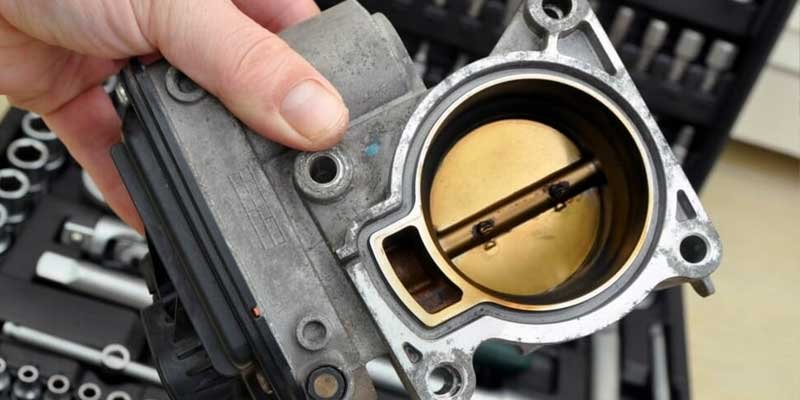
If the engine light is on after you have replaced the throttle body, it will disappear. If the code were a permanent hard code, the ECM (computer’s electronic control module) would need to be reset. The engine light will turn off as it enters a learning cycle, and all codes will get clear.
Do I need to Reprogram the New Throttle Body?
Yes, that is the answer to your question. If you don’t reprogram the throttle body after installing it, you will experience problems. The computer needs the throttle body measurements to control the fuel/air mixture and idle speed under acceleration.
It is also necessary to tell the computer whether you have an electronic throttle (drive by wire) or a traditional mechanical linkage to your throttle cable. Due to the high-performance engine, a special set may be required.
Do you need to program a throttle body sensor? Your throttle position sensor could malfunction due to code errors. Professional software helps you to reprogram the sensor. A professional mechanic is the best person to do this job. Loose or faulty wiring could cause a sensor to malfunction.
How do I Reset the Throttle Body After a Replacement?
After a few seconds, switch the key to “On,” wait three seconds, then press the accelerator five times in 5 seconds. Hold the accelerator down for 7 seconds. Continue to hold the accelerator down until the check engine light stops blinking. The car will then be able to start.
What If all The Methods of Fixing the TPS System Fail?
As most of the methods prescribed above can be model-specific, none of the methods may work for you! In such cases, always take the help of a certified mechanic to let the things fall in the right place. It is worth noting that this is a complicated process and requires a lot of experience and knowledge.
IF you somehow decide to process the replacing the TPS system, the following is the list of materials:
- Protective Gloves
- Back Probe leads
- Safety gear such as protective gloves and glasses
- Repair manuals (consider the online manuals for specific models as they are mostly free).
- Voltmeter
- Screwdriver
Removing the Old Sensor
- Locate the sensor: In most Toyota models, the throttle position sensor is located on the top of the engine and mounted over the throttle body.
- Disconnect the cable: Now, find the negative battery cable and disconnect it.
- Remove sensor electrical connector: once you push down the tab and slide it off, the sensor electrical connector will remove.
- Remove the mounting screws: Take a screwdriver and remove the sensor mounting screws.
- Now you can remove the sensor.
Installing the New Sensor
- Place the new sensor at the required position.
- Now place the sensor mounting screw one by one by hand and subsequently tighten them with a screwdriver.
- Now Reinstall the electrical connector
- Connect it to the negative battery terminal.
- Make the necessary adjustments if required. Most of the electrical sensors do not require adjustments.
Connect the voltmeter to the sensor final ground wire and ground with back probe leads. With the engine running, lose down the sensor screw.
To achieve the desired reading, adjust the sensor by rotating. For throttle position adjustments, it is best to check the factory repair manual to know the exact specifications.
How do I Reset the Gas Pedal to Full Throttle?

The throttle body adapts a setting on your car’s computer that controls throttle opening. The engine temperature and airflow govern it. You will need to reset the factory default setting if the throttle body adapting setting has been altered by a malfunction.
Follow these steps to achieve this:
- Turn on the ignition switch.
- Push the accelerator pedal down until the engine starts. Then, slowly release the pedal while the engine RPMs increase. The throttle position sensor must be completely closed at 0 revolutions per hour (RPM).
- Press and hold the gas pedal down for 10 seconds until RPMs reach from 0 to 2200 pm. Then, release the gas pedal slowly so that it can return to idle. As your vehicle adjusts to its inoperative position, you will notice a bump in your vehicle’s acceleration.
This bump can be felt if your car accelerates from rest after the adaptation process. You may also feel it through the seat when it attempts to accelerate without any gas.
- Once you release the key, you should turn your car off and restart.
- You must ensure that the gas pedal is free of rust and does not stick to the ground.
How to Turn on the Ignition Switch Adaptive Throttle Control Unit?
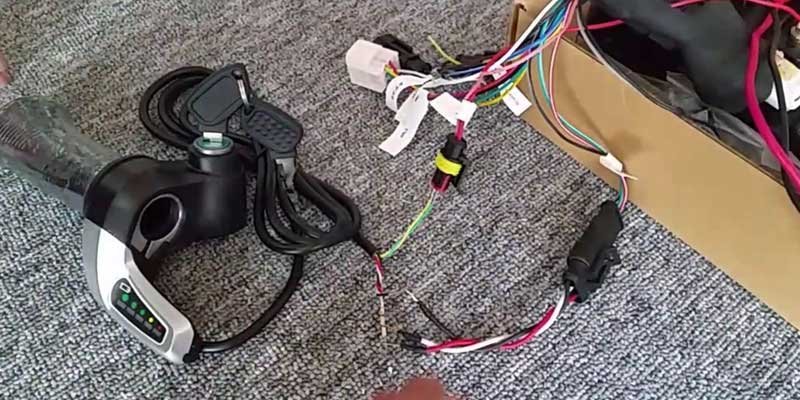
The Adaptive Throttle Controller Unit (ATCU) is activated automatically when you turn on your ignition switch. At this time, the throttle pedal position returns to its original position.
City or AT: System determines the mode of operation while ATCU takes approximately one second to determine the system.
Many sensors are used in the system (gas pedal position sensor and coolant temperature sensor, throttle controller sensor, etc.). The system uses various sensors to decide which mode to use (gas pedal position sensor, coolant temperature sensor, and throttle control sensor). This decision is also influenced by vehicle speed.
The system will go into AT Mode when a cold engine starts, as long as no faults are detected in any sensors or other components (engine control units, transmission control units, etc.).
The ATCU will enter Default Mode if a fault is found during startup. It will then continue to operate in AT Mode until the problem is resolved. The status indicator lamp will light up when a fault has been detected.
Conclusion
Now that we have a detailed information on How to Reset Throttle Position Sensor in a Toyota, you will be able to detect any issue with it easily. Irregular idle revs is one of the basic symptom that hints about the throttle position sensor issues. If you are a Toyota truck owner, you must be considerate about the engine sound.
Frequently Asked Questions (FAQs)
Q1: How do I know if my throttle position sensor is failing?
A1: Some common symptoms of a failing throttle position sensor include erratic acceleration, rough or unstable idling, poor fuel economy, and the check engine light being triggered. If you notice any of these symptoms, it is essential to diagnose the issue and determine if the TPS is the root cause.
Q2: How often should I reset my throttle position sensor?
A2: There isn’t a fixed interval for resetting the TPS. However, you should consider resetting it if you experience performance issues such as rough idling, stalling, or inconsistent acceleration. Regularly monitoring your vehicle’s performance and addressing issues as they arise can help maintain optimal engine functionality.
Q3: Can I reset the throttle position sensor myself, or do I need to take my Toyota to a mechanic?
A3: Resetting the throttle position sensor is a relatively simple procedure that can be done with a few basic hand tools and a multimeter or voltmeter. However, if you are uncomfortable working on your vehicle or lack the necessary tools and experience, it is recommended to consult a professional mechanic to ensure the job is done correctly and safely.
Q4: Is there a specific voltage range I should look for when resetting my TPS?
A4: The ideal voltage range for the TPS may vary depending on your Toyota model. Consult your vehicle’s owner’s manual or repair manual for the recommended voltage range. Generally, the TPS should produce a smooth increase in voltage as the throttle is opened, without any sudden drops or spikes.
Q5: If I replace my throttle position sensor, do I need to reset it as well?
A5: When installing a new throttle position sensor, it is crucial to calibrate or reset the TPS to ensure accurate throttle position readings. This will help maintain optimal engine performance and avoid any issues associated with an improperly calibrated sensor.
Q6: My check engine light came on, and the code indicates a problem with the TPS. Should I reset it or replace it?
A6: If the check engine light is triggered due to a TPS issue, first, try resetting the sensor to see if that resolves the problem. If the issue persists or the TPS fails the voltage test, it may be necessary to replace the sensor.

